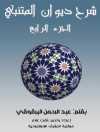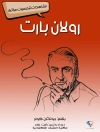Middle English is a student guide to the most influential critical writing on Middle English literature.
* A student guide to the most influential critical writing on Middle English literature.
* Brings together extracts from some of the major authorities in the field.
* Introduces readers to different critical approaches to key Middle English texts.
* Treats a wide range of Middle English texts, including The Owl and the Nightingale, The Canterbury Tales and Morte d’Arthur.
* Organized around key critical concerns, such as authorship, genre, and textual form.
* Each critical concern can be used as the basis for one week’s work in a semester-long course.
* Enables readers to forge new connections between different approaches.
Mục lục
Contents Arranged by Middle English Text/Author.
Preface.
Acknowledgements.
1. Authorship:.
John Lydgate: The Critical Approach: Derek Pearsall (1970).
Literary Theory and Literary Practice: Alastair Minnis.
Authority: Tim William Machan (1994).
2. Textual Form:.
The Hoole Book: Derek Brewer (1963).
Division and Failure in Gower’s Confessio Amantis: Hugh
White (1988).
3. Genre:.
Middle English Narrative Genres: Paul Strohm (1980).
The Religious Tradition: Piero Boitani (1982).
4. Language, Style, Rhetoric:.
Early Middle English Narrative Style: A.C. Spearing (1987).
The Language of Service and Household Rhetoric in the Letters of
the Paston Women: Diane Watt (1993).
Three Languages: Thorlac Turville-Petre (1996).
5. Allegory:.
Patristic Criticism: The Opposition: E. Talbot Donaldson
(1960).
The Poets: Siegfried Wenzel (1967).
Intellectual and Religious Interpretations: Kathryn Hume
(1975).
Allegorical Buildings in Medieval Literature: Jill Mann
(1994).
6. Literature and History:.
Constructing Social Realities: Helen Barr (2001).
Economics: John Bowers (2001).
7. Gender:.
Sexual Economics: Chaucer’s Wife of Bath and The Book of
Margery Kempe: Sheila Delany (1983).
Medieval Medical Views of Women and Female Spirituality in the
Ancrene Wisse and Julian of Norwich’s Showings: Elizabeth
Robertson (1993).
No Pain, No Gain: Violence as Symbolic Capital in Malory’s
Morte Darthur : Laurie A. Finke and Martin B. Schichtman
(1998).
8. Identity:.
Characterisation in the Mystery Cycles: A Critical Prologue:
David Mills (1983).
‘In Arthurus Day’: Community, Virtue, and Individual
Identity in Sir Gawain and the Green Knight: David Aers (1988).
Troilus and Criseyde and Subjectivity: Lee Patterson (1991).
Afterword.
Bibliography.
Index
Giới thiệu về tác giả
Roger Dalrymple is Tutorial Fellow in English at St Hugh’s College, Oxford. He is the author of Language and Piety in Middle English Romance (2000) and Associate Editor of the journal Arthurian Literature












